For year-round operation, reliable raw material supply to the market, and increased profitability in the whitefish industry, live storage of cod is an important contributor. The Fishing Activities Regulations allow fish to be kept in intermediate storage cages for up to 12 weeks before they must be...
Søk i SINTEF
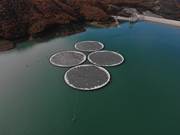
...access and sustainability, are expected to become increasing challenges. Hybrid power plants can answer to many of these challenges. Currently, however, the number of large-scale hybrid power plants in operation is very limited. Business cases for hybridization are still being developed, and in most...
PVADAPT - Prefabrication, Recyclability and Modularity for cost reductions in Smart BIPV systems
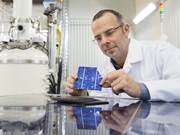
...cities through cheaper and simpler solar cell systems. The building integrated photovoltaics sector can benefit from innovations in construction and solar energy alike, even moreso when the two are in sync. In the PVadapt project, combined innovations in modular construction and modular photovoltaics...
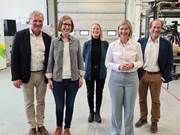
The Norwegian Minister of Trade and Industry Iselin Nybø (V) and the Norwegian Minister of Education and Research Guri Melby (V) were in Trondheim yesterday to present NOK 120 million to the ZeroKyst project. Among other things, ZeroKyst will enable a Norwegian consortium to demonstrate solutions for...
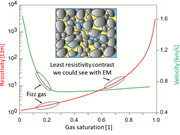
The primary objective of this project is to develop and apply a cost-efficient CO2 monitoring concept using time-lapse CSEM and demonstrate its readiness for the future Norwegian large-scale CO2 storage project (Smeaheia/Johansen). CO2 Capture and Storage (CCS) is nowadays considered a viable option...
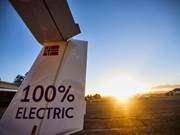
Norwegian Civil Aviation Authority, Avinor, the Federation of Norwegian Industries and SINTEF are joining forces to establish an innovation and testing centre that will seek to promote the development of sustainable aviation and thus reduce emissions from aviation while creating new jobs. Norway's dependence...
NAIDaRo - Norwegian participation in the AI, data and robotics Partnership in Horizon Europe
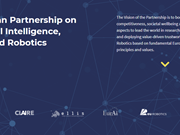
...participation in the AI, data and robotics Partnership in Horizon Europe About the project NAIDaRo aims at ensuring that Norwegian interests in research and industry will continue to have a voice in the development of AI-related activities in Europe's next framework program for research and innovation, Horizon...
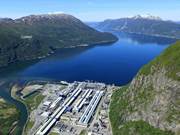
...understanding of erosion and scale formation in pneumatic conveying systems and to develop a method for online monitoring of these two phenomena. Project aim The aim of the project is to enhance our understanding of erosion and scale formation in pneumatic conveying systems and to develop a method for...
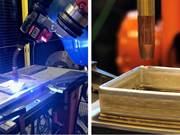
...project is to implement WAAM and LMD processes for repair and refurbishment of offshore components, fulfilling O&G material requirements, with a measurable cost reduction and reduced lead time. Lifetime extension of offshore structures is urgent for ensuring the development and optimal management of Norwegian...

...used in health care, industrial cooling systems, air purification and gas storage. The recent 20 years have seen the discovery of new classes of hybrid nanoporous materials (NPMs). It includes amorphous mesoporous aluminosilicates and Metal-Organic Frameworks (MOFs). Despite the great potential of this...
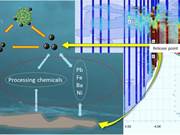
...the fate and effects of subsea mine tailing disposal in Norwegian fjords With a growing demand for mineral resources, mining activities are increasing on a national and global scale. One of the most important environmental issues and economic burdens of industrial mining is the safe disposal and storage...

CLIMIT Summit 2015 took place 24–25 February in Oslo. CLIMIT is the Norwegian programme for research on, development of, and demonstration of technology for, CO2 capture, transport and storage (CCS). Read more on the #SINTEFenergy blog ...

Smartphones and tablets can support children and adolescents with ADHD and/or autism and their families to organise and manage their everyday activities. In the Erre mulig project we aim at finding out what such ICT solutions should contain, and how they can best be provided. Practical technology trials...
IRIS and SINTEF together with the universities in Trondheim (NTNU) and Stavanger (UiS) have just established an international Center for Drilling and Wells for Improved Recovery in cooperation with major oil companies. The objectives are to contribute to improve Norwegian oil production and safety levels...
...adsorbent regeneration. The overall objective of proposed project CAESAR is the reduction of energy penalty and costs of the SEWGS CO2 capture process through optimization of sorbent materials, reactor- and process design. It is emphasized that with an optimized SEWGS process CO2 avoidance cost could be reduced...
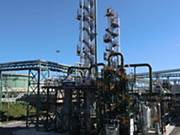
...needed for power generation as well as CO2 capture and compression. Operability and flexibility of first generation post combustion processes are demonstrated by TNO, EnBW and ENEL pilot plants in order to prepare full scale demo projects such as the ROAD and Porto Tolle projects that will start in 2015....
ELMO – Real-time environmental monitoring and modelling of drilling discharges in sensitive areas
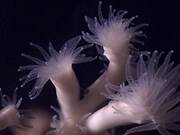
Supported by Statoil and NFR (Demo2000) SINTEF is developing a real-time decision support application for drilling operations in sensitive areas. In 2012 SINTEF Materials and Chemistry, SINTEF Fisheries and Aquacultures, develogic and Statoil developed a semi-automatic real-time modelling software solution...
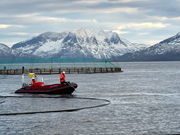
The project will develop new knowledge and propose measures to reduce the risk for personnel in the aquaculture industry. A particular focus is safety challenges that arise at the interface between different organisations. In the period 2012-2022, there were 10 fatalities in the Norwegian aquaculture...

...are partners who will develop and use resilient and sustainable solutions. In the coming years, Norwegian municipalities and businesses must adapt to the effects of climate change. SINTEF is leading RESIST, a major EU-funded project aimed at developing new knowledge and solutions for climate adaptation...
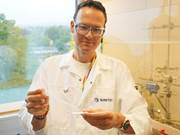
...wings can cause major problems. It can limit flight time, increase costs and pose safety and environmental risks. That is why researchers at SINTEF have developed a new coating material that makes ice removal both more efficient and cheaper – without harming the environment. Drones are becoming increasingly...